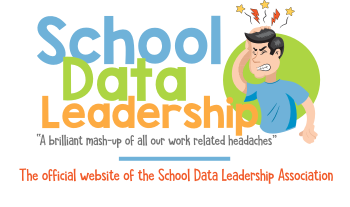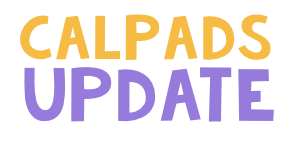CALPADS Update FLASH #152
Data Collection in CALPADS for Adult-age Students
In California, public K–12 local educational agencies (LEAs) serve three types of adult-age students:
- Students with disabilities in postsecondary/transition programs enrolled in K–12 schools and programs.
- Adult-age students attending charter schools with exclusive partnerships with one of the following programs:
- Workforce Innovation and Opportunity Act (WIOA)
- JobCorps
- California Conservation Corps
- YouthBuild
- Adult-age students attending Adult Education Programs (AEPs) funded with Adult Education Program funding.
Recently, there has been confusion about which of these adult-age students should be reported to CALPADS. The purpose of this communication is to clarify some of these issues.
Postsecondary/Transition StudentsThese students with disabilities have individualized education programs (IEPs), are 17 to 21 (inclusive) years of age, and are enrolled in K–12 schools or programs and receive special education services specifically focused on the student's transition from secondary education to career and college.
LEAs receive K–12 apportionment funding for these students and therefore these
adult-age students should be reported in CALPADS as follows:
- Enrollment Status of 10 – Primary
- Grade level of 12
- Postsecondary/Transition Status Indicator set to "Y" – Yes (available for population in CALPADS in May 2019).
- Enrollment at the school where they receive the majority of their special education instruction and related services; or if they receive the majority of their instruction and services directly through a district-level program, the student should be enrolled in CALPADS at the district level.
Students meeting these criteria will be excluded from the graduation rate denominators for traditional and Dashboard Alternative School Status (DASS) schools after their initial graduation cohort year.
Adult-age Students Attending a Charter School in an Exclusive PartnershipK–12 charter schools in exclusive partnerships with one of the following programs can enroll students of any age:
- Workforce Innovation and Opportunity Act (WIOA)
- JobCorps
- California Conservation Corps
- YouthBuild
LEAs receive K–12 apportionment funding for these students and therefore these adult-age students should be reported in CALPADS as follows:
- Enrollment Status of 10 – Primary
- Grade level that is representative of their credits-based grade level (7–12)
- Enrollment at the charter school
Adult Education Programs (AEPs) funded with Adult Education Program funding serve students 18 and older. These students are typically participating in one of these programs:
- Adult Literacy/High School Diploma
- English as a Second Language/Citizenship
- Adults with Disabilities (no longer on individualized education programs [IEPs])
- Career Technical Education/Apprenticeships
- Parenting, Family, and Consumer Awareness
- Older Adults
As described in CALPADS Flash #149, beginning in July of 2019, LEAs will be required to obtain statewide student identifiers (SSIDs) for adult students attending AEPs administered by K–12 LEAs if 1) they do not have an SSID already; and 2) if they have no social security number documented in the Comprehensive Adult Student Assessment System (CASAS). LEAs are only required to obtain SSIDs for these adult-age students, and no other data on these adult-age students need to be submitted or maintained in CALPADS. As described in CALPADS Flash #149, LEAs should obtain SSIDs for these adult-age students by:
- Enrolling the student at the LEA's Adult Education Program (AEPs should have a county-district-school code)
- Enrolling the student with an Enrollment Status of 20 – Secondary (see Note below)
- Enrolling and exiting the student using the same date
- Using Grade level of AD (Adult)
Note: Beginning in 2019–20, there will be a new enrollment status of 50 – Non-ADA Enrollment Status; once this enrollment status is available, LEAs should enroll these adult students using Enrollment Status 50.
Questions: CALPADS/CBEDS/CDS Operations Office |
Last Reviewed: Thursday, March 7, 2019


Comments